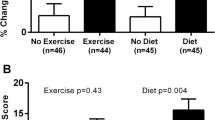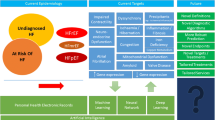Abstract
Cardiac resynchronization therapy (CRT) has become an established therapeutic option for patients with dilated cardiomyopathies and New York Heart Association class III congestive heart failure symptoms who also have a widened QRS complex on their electrocardiograms (generally > 120 ms). Results from a number of clinical trials have shown that CRT improves patients’ exercise tolerance, quality of life, and survival. There is further evidence that CRT has structural effects on the heart with improved cardiac function. Despite these salutary results, clinical trials in CRT study prespecified populations that fit the inclusion criteria for these trials. Many patients have been excluded from these clinical trials and yet may potentially benefit from CRT. Evaluation of the effects of CRT on these populations might reveal the potential to expand the use of this therapy in larger numbers of patients to CRT who may not have been included in the clinical trial. This review article will assess the limitations of some of the clinical trials in CRT and will discuss the potential for CRT registries that are presently underway to extend the patient population that may benefit from this therapeutic option.
Similar content being viewed by others
References and Recommended Reading
Cleland JG, Khand A, Clark AL: The heart failure epidemic: exactly how big is it? Eur J Heart Fail 2001, 22:623–626.
American Heart Association: 2002 Heart and Stroke Statistical Update. Dallas: American Heart Association; 2001.
Hunt SA, Baker DW, Chin MH, et al.: ACC/AHA 2005 guideline update for the diagnosis and management of chronic heart failure in the adult. J Am Coll Cardiol 2005, 46:1116–1143.
MERIT HF Study Group: Effect of metoprolol CR/XL in chronic heart failure. Metoprolol CR/XL randomized intervention trial in congestive heart failure (MERIT-HF). Lancet 1999, 353:2001–2007.
Yu C-M, Chau E, Sanderson JE, et al.: Tissue Doppler echocardiographic evidence of reverse remodeling and improved chronicity by simultaneously delaying regional contraction after biventricular pacing therapy in heart failure. Circulation 2002, 105:438–445.
Xiao HB, Lee CH, Gibson DG: Effect of left bundle branch block on diastolic function in dilated cardiomyopathy. Br Heart J 1991, 66:443–447.
Xiao HB, Brecker S, Gibson DG: Effects of abnormal activation on the time course of left ventricular pressure in dilated cardiomyopathy. Br Heart J 1992, 68:403–407.
Kass DA, Chen CH, Curry C, et al.: Improved left ventricular mechanics from acute VDD pacing in patients with dilated cardiomyopathy and ventricular conduction delay. Circulation 1999, 99:1567–1573.
Kerwin WF, Botvinick EH, O’Connel JW, et al.: Ventricular contraction abnormalities in dilated cardiomyopathy: effect of biventricular pacing to correct interventricular dyssynchrony. J Am Coll Cardiol 2000, 35:1221–1227.
Auricchio A, Stellbrink C, Sack S, et al.: Long-term effect of hemodynamically optimized cardiac resynchronization therapy in patients with heart failure and ventricular conduction delay. J Am Coll Cardiol 2002, 39:2026.
Stellbrink C, Auricchio A, Butler C, et al.: Pacing therapies in congestive heart failure II study. Am J Cardiol 2000, 86(Suppl):138K–143K.
Auricchio A, Stellbrink C, Sack S, et al.: For PATH-CHF Study Group. The pacing for congestive heart failure (PATH-CHF) study rationale, design and end-points of a prospective randomized multicenter study. Am J Cardiol 1999, 83(Suppl):130D–135D.
Cazeau S, Leclercq C, Lavergne T, et al.: The Multisite Stimulation in Cardiomyopathies (MUSTIC) Study Investigators. Effects of multisite biventricular pacing in patients with heart failure and intraventricular conduction delay. N Engl J Med 2001, 344:873–880.
Abraham WT, Fisher WG, Smith AL, et al.: For the MIRACLE Study Group. Cardiac resynchronization in chronic heart failure. N Engl J Med 2002, 346:1845–1853.
Young JB, Abraham WT, Liem L, et al.: Cardiac resynchronization therapy (CRT) benefits patients with ICD indications-results of the InSync ICD Trial. Pacing Clin Electrophysiol 1002, 25:694.
Saxon LA, Boehmer JP, Hummel J, et al.: Biventricular pacing in patients with congestive heart failure: two prospective randomized trials. The VIGOR CHF and VENTAK CHF Investigators. Am J Cardiol 1999, 83:120D–123D.
Linde C, Leclerq C, Rex S, et al.: Long-term benefits of biventricular pacing in congestive heart failure: results from Multisite Stimulation in Cardiomyopathy (MUSTIC) study. J Am Coll Cardiol 2002, 40:111–118.
Linde C, Braunschweig F, Gadler F, et al.: Long-term improvements in quality of life by biventricular pacing in patients with chronic heart failure; results from Multisite Stimulation in Cardiomyopathy (MUSTIC) Study. Am J Cardiol 2003, 91:1090–1095.
Saxon LA, De Marco T, Schafer J, et al.: For the VIGORCHF Investigators. Effects of chronic biventricular stimulation for resynchronization on echocardiographic measures of remodeling. Circulation 2002, 105:1304–1310.
St. John Sutton MG, Plappert T, Abraham WT, et al.: For the Multicenter Insync Randomized Clinical Evaluation (MIRACLE) Study Group. Effect of cardiac resynchronization therapy in left ventricular size and function in chronic heart failure. Circulation 2003, 107:1985–1990.
Bristow MR, Saxon LA, Boehmer J, et al.: Cardiac-resynchronization therapy with or without an implantable defibrillator in advanced chronic heart failure. N Engl J Med 2004, 350:2140–2150.
Cleland JG, Daubert JC, Erdmann E, et al.: The effect of cardiac resynchronization on morbidity and mortality in heart failure. N Engl J Med 2005, 352:1539–1549.
McAnulty HJ, Rahimtoola HS, Murphy E, et al.: Natural history of “high-risk’ bundle-branch block. N Engl J Med 1982, 307:137–143.
Shenkman HJ, McKinnon JE, Khandelwal AK, et al.: Determinants of QRS prolongation in a generalized heart failure population: findings from the Conquest Study [abstract]. Circulation 2000, 102(Suppl II).
Schoeller R, Andersen D, Butner P, et al.: First or second-degree atrioventricular block as a risk factor in idiopathic dilated Cardiomyopathy. Am J Cardiol 1993, 71:720–726.
Aaronson KD, Schwartz JS, Chen TM, et al.: Development and prospective validation of a clinical index to predict survival in ambulatory patients referred for cardiac transplant evaluation. Circulation 1997, 95:2660–2667.
Farwell D, Patel NR, Hall A, et al.: How many people with heart failure are appropriate for biventricular resynchronization? Eur Heart J 2000, 21:1247–1250.
Shamin W, Francis DP, Yousufuddin M, et al.: Intraventricular conduction delay: a prognostic marker in chronic heart failure. Int J Cardiol 1999, 70:171–178.
Baldasseroni S, Opasich C, Gorini M, et al.: Left bundlebranch block is associated with increased 1-year sudden and total mortality rate in 5517 outpatients with congestive heart failure: a report from the Italian Network on Congestive Heart Failure. Am Heart J 2002, 143:398–405.
Auricchio AU, Klein HU: Beyond expectations: a decade of positive results with cardiac resynchronization therapy for heart failure. Eur Heart J Supplements 2002, 4(Suppl D):D95–D101.
Gasparini M et al.: Long-term survival in patients treated with cardiac resynchronization therapy: a 3-year follow-up study from the InSync/InSync ICD Italian Registry. Pacing Clin Electrophysiol 2006, 29(Suppl 2):S2–S10.
Eisen HJ: Interim report of RESTORE-US Registry. Presented at RESTORE-US Investigator Meeting. Orlando, FL; March 6, 2005.
Abraham WT, Eisen HJ, Cohn JN: Cardiac resynchronization therapy is effective in patients with atrial fibrillation: interim results From the RESTORE-US Study. J Card Fail 2005, 11(6 Suppl):S89–S202.
Author information
Authors and Affiliations
Corresponding author
Rights and permissions
About this article
Cite this article
Eisen, H.J. What can post market registries tell us about the use of cardiac resynchronization therapy?. Curr Heart Fail Rep 4, 39–42 (2007). https://doi.org/10.1007/s11897-007-0024-3
Published:
Issue Date:
DOI: https://doi.org/10.1007/s11897-007-0024-3




